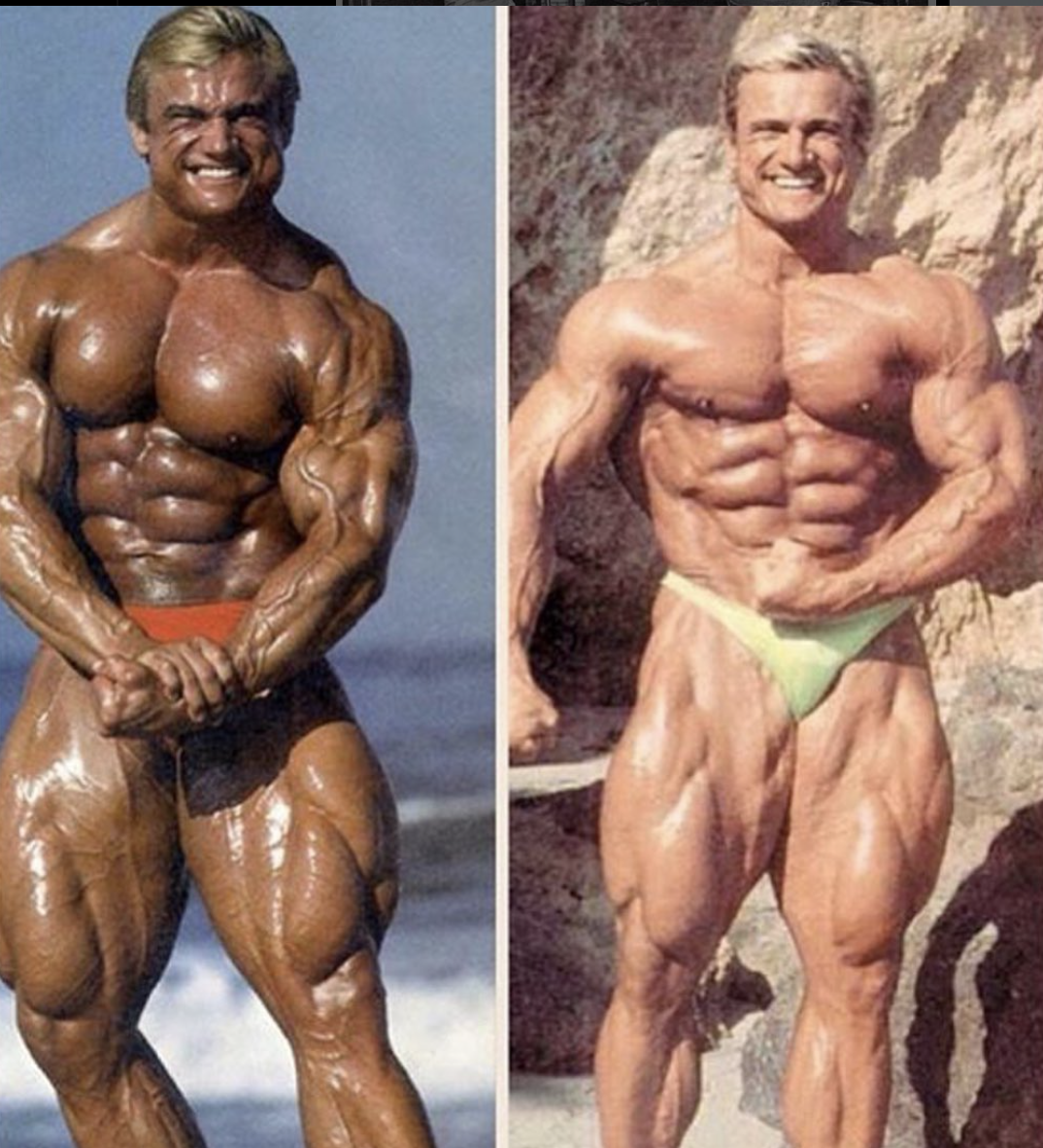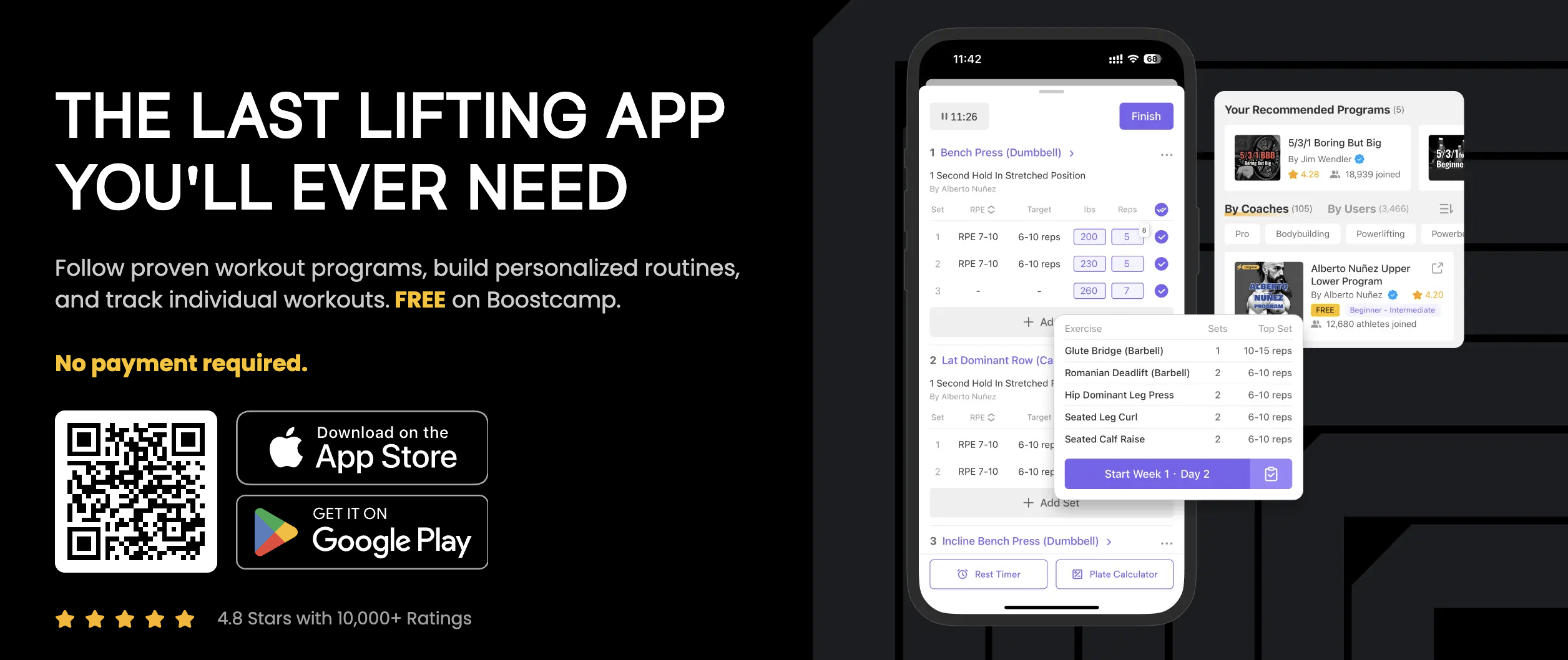Is Training to Failure Necessary?
Written by The Boostcamp Editors
How close to muscular failure should you take each set?
When it comes to each set that you do, many lifting programs will have you leaving a few reps in reserve, for both strength based sports like powerlifting and hypertrophy based sports like bodybuilding. What that means is you will finish your set and still be able to do a few more reps, but you do not complete them, this method is used more by powerlifters and strength athletes who are not focused on hypertrophy. Now, other training programs may call for you to train to muscular failure, meaning you physically cannot complete anymore repetitions. However, what about the drawbacks of training to failure? Are there any?
When it comes to hypertrophy, some of the biggest, most muscular athletes to walk the earth use the training to failure methodology, including strength training for muscle size and strength gains. One bodybuilder infamous for training to failure was Tom Platz, and while many said it was junk volume, he had some of the most impressive legs in the world. This approach has also been studied in the field of health science, with a 2022 systematic review and meta-analysis published in the Journal of Sport and Health Science suggesting that training to failure may be beneficial for experienced, trained lifters in terms of greater increases in activation of motor units, muscle strength, and mass gains.

Image courtesy of Instagram (@tomplatz)
Boostcamp’s very own Michael Liu was able to sit down with Geoff Verity Schofield, one of the most popular natural bodybuilding coaches on the internet, and one of Boostcamp's coaches, and the topic of training to failure came up.
Reserve Reps are a Waste
Geoffrey was asked what opinions he had that other evidence based coaches may disagree with, and he came out swinging on the proximity to failure idea, saying that leaving reps in reserve is not necessarily good for hypertrophy. He states that once you train to failure consistently for many years, leaving reps in reserve does not do anything. Geoff says that leaving reps in reserve maybe on heavy compound movements like a Romanian deadlift or even a barbell back squat makes sense, but on other accessory movements like bicep curls, it is pointless.
Geoff said that he actually uses the “beyond failure” methodology in his training programs, which is pretty high volume and suitable for beginners. He said that as long as you can adapt to it, you can survive and thrive with training beyond failure. Many people criticize this high intensity method, saying that you can only do one set to achieve results, but Geoff begs to differ, stating that you can do higher volume and higher intensity if you focus on keeping it controlled with good form, and progressively overloading and adapting over time.
He mentions that barbell compound lifts of powerlifting, including compound movements such as squats and deadlifts, stating that if they want to maximize strength instead of muscle then leaving reps in reserve, as they are a bit more limited. However, with hypertrophy training, then diversifying training and pushing closer to failure, specifically through resistance exercise, is key to make progress in muscle hypertrophy. This is because pushing closer to failure leads to a greater number of cross bridges being activated during a muscle contraction, resulting in increased maximum force capacity. He references a study that supports his statement.
Removing Mental Blocks
Regarding training to failure, Geoff goes on to say that it is not only physically, but also mentally tough to get there. In reality, your gains are right over that failure wall. Geoff’s advice is to build towards it and only do it on certain movements (non-spinal loaded movements) and try to do some partial reps of barbell curls once you hit failure on some sets. He says that you really need to ease into training to failure, as it is something that takes a bit for your body to adapt to.
If you train to failure too often, you risk overtraining, burning yourself out, or even worse, injury risk, which is certainly less than ideal.
Natural Lifters can Train to Failure and Beyond
While many people think that training to failure is only good for you if you are on steroids, this is not true. Geoff says that there are plenty of studies done with natural lifters where they were pushed to, as well as beyond failure during their training, and their bodies were able to adapt to it as well. At the end of the 8 week study that Geoff references, he said that these natural lifters were not even getting sore.
This goes back to the above section, where Geoff says that training to failure is something that your body will have to adapt to, and he is not wrong. Training to failure is something that will leave you sore and fatigued for the first few weeks of trying it, but once you adapt to training to failure, you will not want to go back to your old ways of training with fewer repetitions. Improving muscle strength is just one of the benefits of training to failure, as shown by a recent study conducted in 2018 on performance outcomes following resistance training. This study suggests that training to failure may not produce positive results and could even reduce the effectiveness of the rest of the workout, but natural lifters and strength coaches can still experience similar increases in muscle growth without training to absolute failure.
One thing that Geoff advises before training beyond failure is training to failure first. He also says that training to zero reps in reserve first is good as well. It's important to note that training to complete failure, or the point where you can no longer complete another rep with proper form, should be done with caution and proper form to avoid injury, and that training beyond failure, also known as repetition failure, should only be done by experienced lifters under the guidance of a qualified spotter and based on their one-rep max. Additionally, incorporating a proper rest period between sets is crucial in order to reach the ideal failure point for each individual in weight training, as well as determining the appropriate number of repetitions for each set.
Importance of Recovery When Training to Failure
When you are brutalizing your body through taking your sets to failure and beyond, you will need to truly focus on the recovery aspect of your regimen. During this type of training, you are absolutely destroying the muscle fibers in the body, and that is great. But your work does not stop there, you cannot just continue to break down the muscles, and expect them to grow. Instead, when training to failure, you truly have to focus on recovery, as this is where your muscles will grow back bigger and stronger, while minimizing excessive muscle damage.
Here are some things to focus on to help your recovery:
Diet
Fueling your body with the proper foods helps to repair and grow your muscles. Making sure to get enough protein, fat, and carbs is key to contraction, recovery, and progression.
Supplementation
While maintaining a healthy diet is key to getting in the proper nutrients, sometimes that is not always enough. This is where supplements come into play, as they are designed to help advanced lifters get in a proper amount of nutrients that diet will not always allow for. Things like protein powder, creatine, and multivitamins are great supplements to make sure you are recovering properly.
Sleep
This may sound stupid to some, but making sure you get enough sleep is absolutely crucial for your recovery time process, especially when you are training to failure. Sleep generates a good amount of testosterone and growth hormone in the body, which are both necessary for building muscle mass. It is recommended to get at least 7-8 hours of sleep per night for optimal recovery, and it's important to note that the next set of muscle recovery can take anywhere from 24-48 hours after a workout.
Workout Routines
Finding a good workout program to put on size and strength is key. Keep in mind that good programs will help with your fitness journey, you would want to find a program that caters to your needs and guides you in the right direction, making sure that you are making the most gains. If you are looking to stay on track and continue with linear progression, then finding a good workout program is the key. Where do you look for a good workout program? Check out the Boostcamp App for some great programs.
Boostcamp is home to over 50 FREE workout programs that consist of strength, hypertrophy, or functional fitness, or both, from the push pull legs program all the way to upper lower. However, with Boostcamp, you don’t have to just follow a pre-written program, you also can create your own program as well using the Program Creator feature, and track your progress to make sure you are on the right track. That being said, when you are looking to incorporate some arm training to further your powerlifting progress, then check out Boostcamp.
So, is Training to Failure Beneficial?
When it comes to the goal of hypertrophy, then training to failure and even beyond that point can be beneficial for you. Training to skeletal muscle failure forces your body to grow and adapt to the absolute brutalization that you are putting it through, which can lead to muscle growth and increased muscular strength. Now there are a few things to keep in mind, and that is that you cannot just jump right into training to failure and beyond, and you also need to prioritize recovery to reap the full benefit of training.
Will you be training to failure?
Check out the Boostcamp App for some great programs. Also, be sure to follow Boostcamp on Instagram and subscribe on YouTube!


